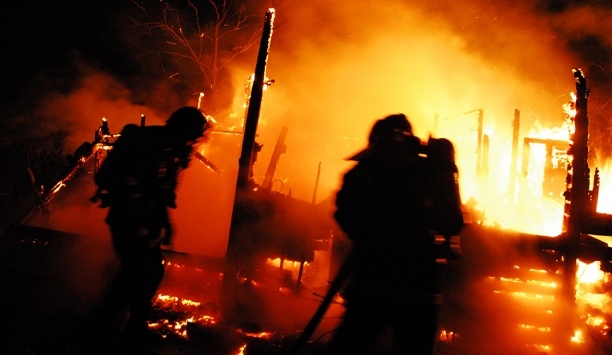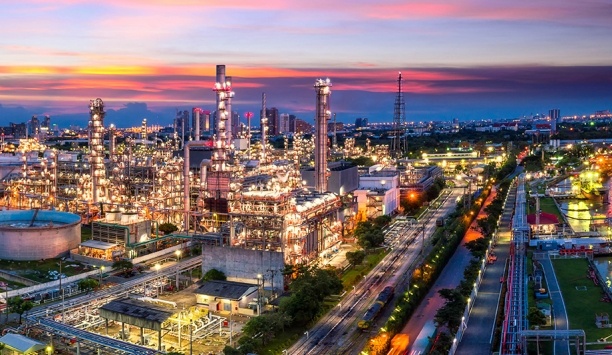While whole room protection – sprinklers or gas systems – is a common choice, there is an argument for thinking smaller; taking fire detection and suppression down to the equipment, enclosures and even the components where a fire is most likely to start.
Traditional Fire Suppression Methods
A traditional water-based sprinkler system is the most common form of fire protection found in commercial and industrial buildings. They offer reasonable cost, large area protection for entire facilities, safeguarding the structure and personnel by limiting the spread and impact of a fire. Every square foot of the protected area is covered equally regardless of the contents of the space, whether it’s an empty floor or an object with an increased risk of fire.
Sprinklers aren’t always the most appropriate choice. Not all fires are extinguished by water of course, and in some cases, water damage can be just as harmful or even more so than the fire. They are an impractical choice for instance for facilities housing anything electrical, such as data centres and server rooms. There is also the risk of accidental activation, with an estimated cost of up to $1,000 for every minute they are left running. Water damage can be just as harmful or even more so than any fire, so sprinklers may not be appropriate
Targeted Supplementary Fire Suppression
An alternative method to protect whole server rooms and data centres is gas fire suppression, which either suppresses the fire by displacing oxygen (inert) or by using a form of cooling mechanism (chemical/synthetic). These aren’t without risk; in the case of inert gas, oxygen is reduced to less than 15% to suffocate the fire, but must be kept above 12% to avoid endangering the lives of personnel. Similarly, clean agent gas can be toxic in high doses.
There are smaller, focused systems that give the option of highly targeted supplementary fire suppression within fire risk areas. Installing a system directly into the areas most at risk, means that fires can be put out before they take hold and cause serious damage.
Both sprinkler and gas systems can contain a fire, but micro-environment or closed space systems are completely automatic, detecting and suppressing the fire so rapidly that activating a sprinkler or gas total flooding system often isn’t necessary.
The most popular enclosure fire suppression systems achieve this though the use of a flexible and durable polymer tubing that is routed easily through the tightest spaces. The tubing is extremely sensitive to heat and, because it can be placed so close to potential failure points, detects it and releases the fire suppression agent up to ten times faster than traditional systems.
 |
| An airline was forced to cancel over 2,000 flights after a “small fire” in one of its data centers |
Cost-Effective Fire Protection
Highly customizable, small enclosure fire suppression is specifically designed to protect business critical spaces and equipment. It is typically used inside machinery like CNC machines, mobile equipment like forklifts and inside server rooms and electrical cabinetry but is suitable for any hazard that’s considered to have an elevated fire risk.
Some may question the need or cost-effectiveness of protecting micro-environments. However, examples abound of where fires that have started at component level have gone on to cause damage of the highest magnitude, and the cost of downtime can be crippling to many time-sensitive facilities and processes.
An airline was forced to cancel over 2,000 flights in August 2016 when what was described as a “small fire” in one of its data centers ultimately led to a computer outage. The cost of that small fire, and the domino effect that quickly escalated from it, has since been announced as $150m.
Admittedly that number is unusually high - the average cost of a data centre outage today is estimated at a more conservative $730,000 – but this is still an expense businesses can ill afford.
Preventing Major Losses
Staying with the transport industry, newer metros systems have redundant systems in place to prevent interruptions. However, older metro lines, such as the one in New York City, have experienced electrical fires that started small, but grew to such a magnitude that service was affected for months.Older metro lines, such as New York City's, have experience electrical fires that start small but grew exponentially
A wind energy customer experienced a fire in a turbine converter cabinet. The loss of the cabinet was valued at over $200,000 and disabled the turbine for six weeks. Following investment in fire suppression systems inside the electrical cabinet, a subsequent fire was detected and suppressed before major damage could be caused. The cost on this occasion was therefore limited to a $25,000 component and downtime was less than two days.Equally - happily - there are also many instances where the installation of small enclosure fire suppression has prevented disaster.
In the manufacturing world, CNC machines are valued at hundreds of thousands of dollars and need to be constantly operational to justify the investment. Oil coolant used in the machines can create a flash fire in an instant due to failed components or programming errors. The fact that many of these facilities are run ‘lights out’ with no personnel present further exacerbates the risk. If a fire is not dealt with immediately, the machine will be destroyed; sprinklers don’t react quickly enough for this scenario and would be ineffective.
Ensuring Business Continuity
One such flash fire occurred inside a protected CNC machine at a machine shop in Iowa. The polymer tubing ruptured within a fraction of a second, releasing the suppression agent and extinguishing the flames. The machine was undamaged and was operational again with a few hours. Contrast this to a previous fire at the same facility in an unprotected machine; it was out of operation for 4 days, costing the business thousands of dollars in downtime
In short, fire protection is an essential element of our industrial and commercial environments to ensure both safety and business continuity. However, the nature of that protection is changing, as capacity increases to cost-effectively protect specific areas where fires are most likely to start.
Risk mitigation analysis needs to look beyond what has been accepted in the past and find ways to further limit the impact of a small fire using this next level of protection. The benefits can really have a positive effect on the bottom line in the event of fire.


















